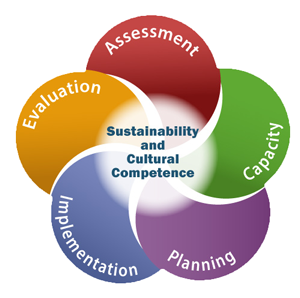EDUCATION

Strategic Prevention Framework
Campbell County Drug Free Alliance (CCDFA) uses the Substance Abuse and Mental Health Services Administration’s (SAMHSA) Strategic Prevention Framework (SPF) as a guide to plan, implement and assess prevention problems. The five steps and two guiding principles of the SPF give CCDFA a comprehensive process for addressing substance misuse and other related problems affecting the community.
Five Steps of the SPF
Two Guiding Principles of SPF

Cultural Competence
The ability to interact effectively with members of diverse populations

Sustainability
The process of achieving and maintaining long-term results
